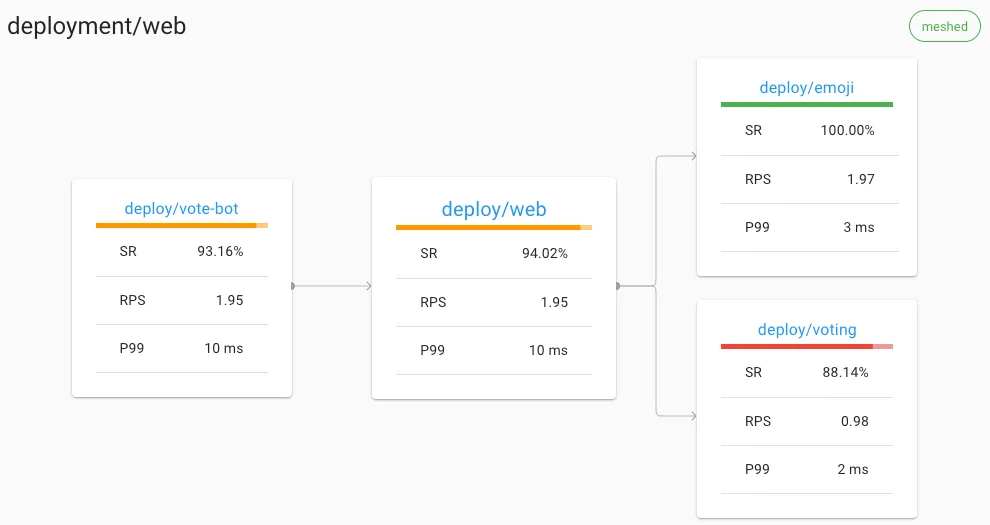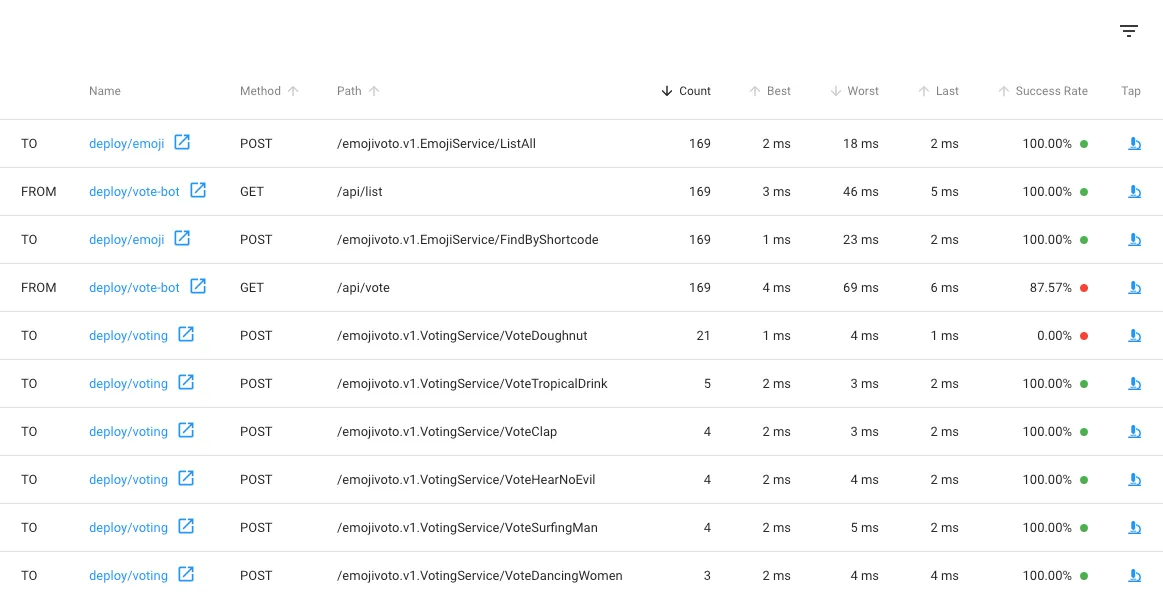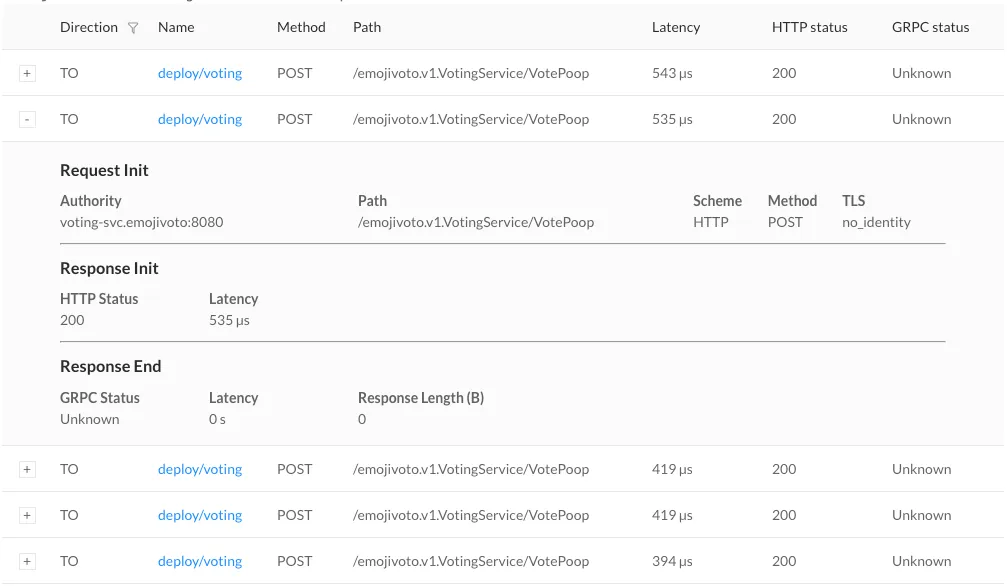Debugging (Optional)
Debugging application using Linkerd
We will be using Linkerd to debug the sample application, we had deployed earlier in the workshop. The demo application emojivoto has some issues. Let's use that and Linkerd to diagnose an application that fails in ways which are a little more subtle than the entire service crashing.
Let's jump into debugging the Emojivoto application right away.
Exploring the Linkerd Dashboard
In the event that you look at the Linkerd dashboard (by running the linkerd dashboard command), you should see all the resources in the emojivoto namespace, including the deployments. Every deployments running Linkerd shows success rate, requests per second and latency percentiles. If you see closely, you will observe success rate is below 100% because of some buggy endpoint present in the service.

The first thing you'll see here is that the web deployment is taking traffic from vote-bot (a deployment included with emojivoto to continually generate a low level of live traffic). The web deployment also has two outgoing dependencies, emoji and voting.
While the emoji deployment is handling every request from web successfully, it looks like the voting deployment is failing some requests! A failure in a dependent deployment may be exactly what is causing the errors that web is returning.
Debugging the application
Scrolling down a little from the deployment page, we'll see a live list of all traffic that is incoming to and outgoing from web.

There are two calls that are not at 100%: the first is vote-bot's call to the '/api/vote' endpoint. The second is the 'VoteDoughnut' call from the web organization to its needy arrangement, casting a ballot.
Since '/api/vote' is an approaching call, and 'VoteDoughnut' is an active call, this is a decent sign that this endpoint is what's causing the issue!
To burrow somewhat more profound, we can click on the tap symbol in the extreme right section. This will take us to the live rundown of requests that match just this endpoint. You'll see 'Unknown under the GRPC status section'.

This is because the requests are failing with a gRPC status code 2, which is a common error response.
Note: Linkerd is aware of gRPC's response classification without any other configuration.
Now at this point we have all the necessary debugging information which can help us to restore the application to stable/working state.